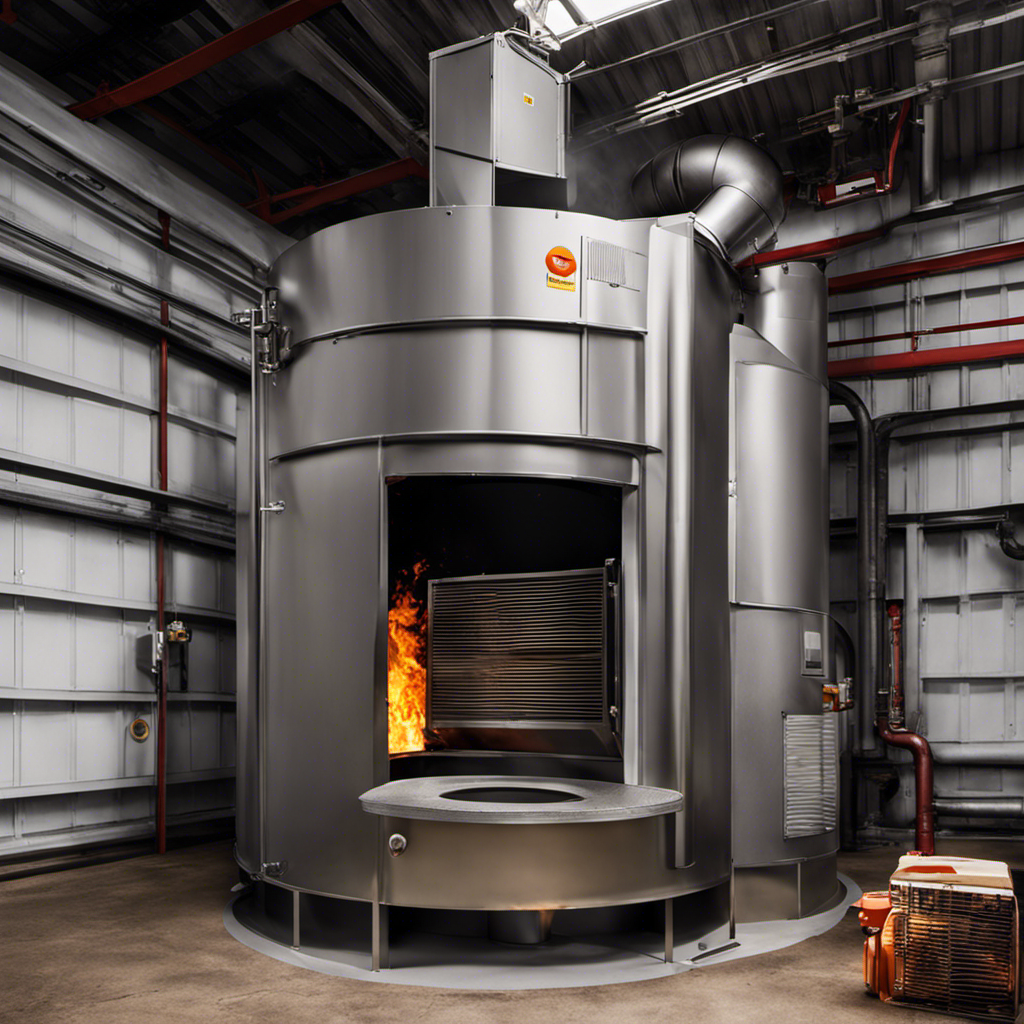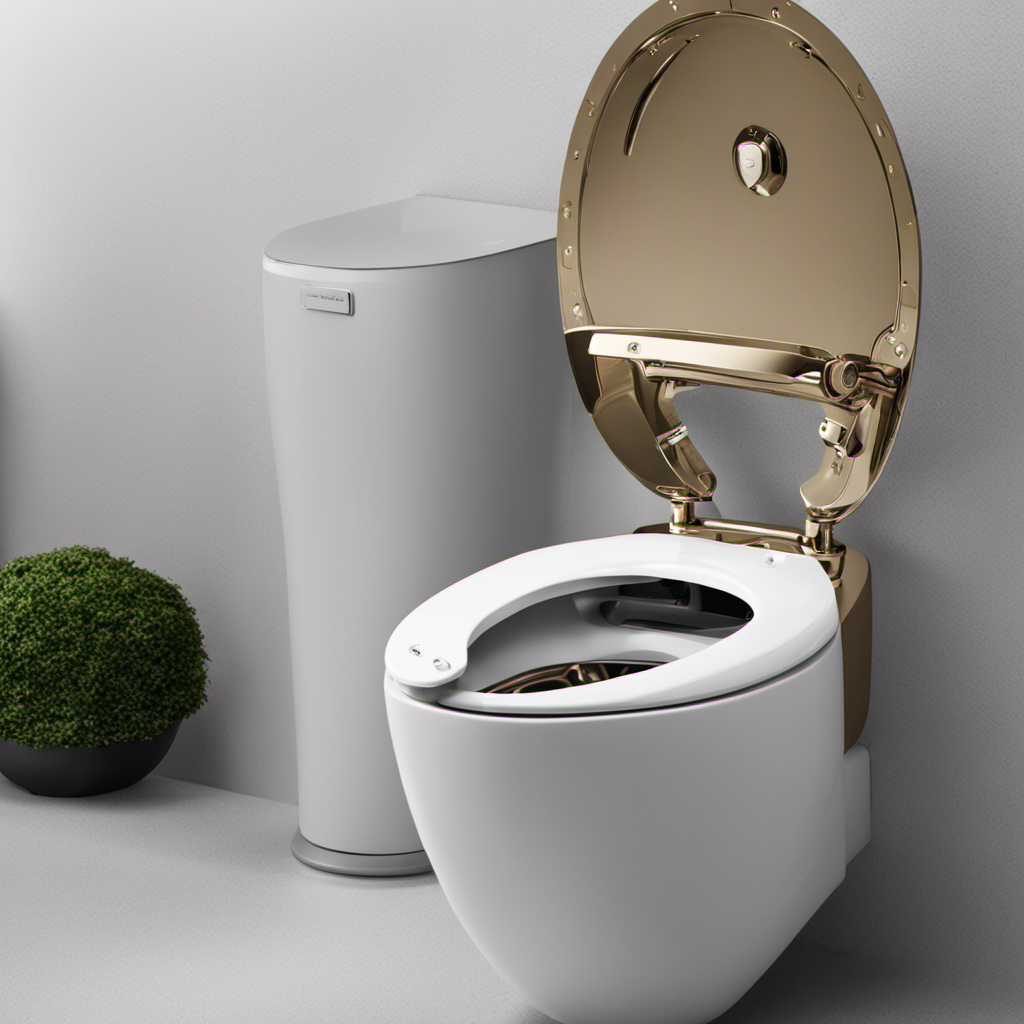Hey there, ever wondered how an incinerator toilet works? Well, let me break it down for you.
This nifty piece of technology offers a convenient and environmentally friendly alternative to traditional flushing toilets. In this article, we’ll dive into the inner workings of an incinerator toilet, exploring its components, the fascinating incineration process, and even some maintenance tips.
So, buckle up and get ready to learn about the future of waste disposal!
Key Takeaways
- Incinerator toilets eliminate odors and reduce water usage.
- The incineration process involves transferring waste to the combustion chamber and using high temperatures to reduce it to fine ash.
- Maintenance and cleaning tips for incinerator toilets include regularly checking temperature, using mild detergent for cleaning, and troubleshooting if the toilet doesn’t ignite waste.
- Incinerator toilets have positive environmental impacts by reducing waste volume, eliminating the need for traditional sewage systems, and minimizing carbon emissions through efficient incineration.
Benefits of an Incinerator Toilet
You’ll love the benefits of an incinerator toilet, such as odor elimination and reduced water usage.
An incinerator toilet is designed to efficiently dispose of waste by using high temperatures to completely burn it. This process not only eliminates odors but also ensures proper sanitation.
Unlike traditional toilets that require large amounts of water for flushing, incinerator toilets utilize energy efficiency by using electricity or gas to generate the heat needed for incineration. This not only saves water but also reduces the strain on water resources.
Additionally, incinerator toilets are compact and require minimal space, making them suitable for small homes or recreational vehicles.
With their efficient waste disposal and odor control capabilities, incinerator toilets are a practical and environmentally-friendly choice for modern sanitation needs.
Components of an Incinerator Toilet
The components of an incinerator toilet include a combustion chamber, a ventilation system, and an ash collection tray.
This toilet design utilizes incineration technology to effectively dispose of waste. The combustion chamber is where the actual incineration process takes place. It is designed to reach high temperatures, typically around 1000 degrees Celsius, to ensure complete combustion of the waste.
The ventilation system helps to draw in fresh air and expel the resulting emissions, such as smoke and gases, while also providing oxygen for combustion.
Finally, the ash collection tray is where the remaining residue, or ash, is collected after the incineration process is complete. This tray can be easily removed and emptied, ensuring a clean and hygienic disposal method.
Now, let’s delve into the incineration process explained.
The Incineration Process Explained
Now, let me explain how the incineration process actually works.
The incineration mechanism in an incinerator toilet is designed to convert human waste into ash using high temperatures. When you activate the flush, the waste is transferred into the combustion chamber. Inside the chamber, an electric heating element is used to raise the temperature to around 600-800 degrees Celsius. This extreme heat effectively incinerates the waste, reducing it to fine ash.
Temperature control is a crucial aspect of the process to ensure complete incineration without causing any damage. Sophisticated sensors and controls monitor and regulate the temperature throughout the process.
Once the incineration is complete, the ash can be safely disposed of.
Speaking of disposal, let’s move on to maintenance and cleaning tips for incinerator toilets.
Maintenance and Cleaning Tips for Incinerator Toilets
First, let’s talk about how to properly maintain and clean your incinerator toilet. Regular maintenance and cleaning are crucial to ensure the efficient and hygienic operation of your incinerator toilet. Here are some tips to help you maintain and troubleshoot common issues with your incinerator toilet.
| Maintenance Tips | Cleaning Tips | Troubleshooting |
|---|---|---|
| Regularly check | Use a mild detergent | If the toilet doesn’t |
| the incinerator | or disinfectant to | ignite the waste, |
| temperature and | clean the toilet | check the power supply |
| ensure it is | bowl and seat | and ensure the |
| operating within | thoroughly | incinerator is clean |
| the recommended | rinse the toilet | and free of any |
| range. | with water. | obstructions. |
Environmental Impact of Incinerator Toilets
Regular maintenance and cleaning of incinerator toilets are important to consider because they can help minimize the environmental impact of these systems. Incinerator toilets are designed to burn human waste at high temperatures, which reduces the volume of waste and eliminates the need for traditional sewage systems. This process significantly reduces the amount of waste that ends up in landfills or water bodies, contributing to better waste management.
Additionally, incineration produces carbon emissions, but with proper maintenance, these emissions can be minimized. Regular cleaning ensures that the incinerator is functioning efficiently, reducing the amount of time it takes to burn waste and decreasing carbon emissions.
Conclusion
In conclusion, the incinerator toilet is a remarkable innovation that offers numerous benefits. Its efficient and clean incineration process eliminates the need for water or plumbing, making it ideal for remote locations or off-grid living.
With proper maintenance and cleaning, these toilets can provide a reliable and odor-free waste disposal solution. However, it’s important to consider the environmental impact of incinerator toilets, as they do release emissions during the incineration process.
Overall, the incinerator toilet is a fascinating technology that holds great potential for sustainable waste management.










